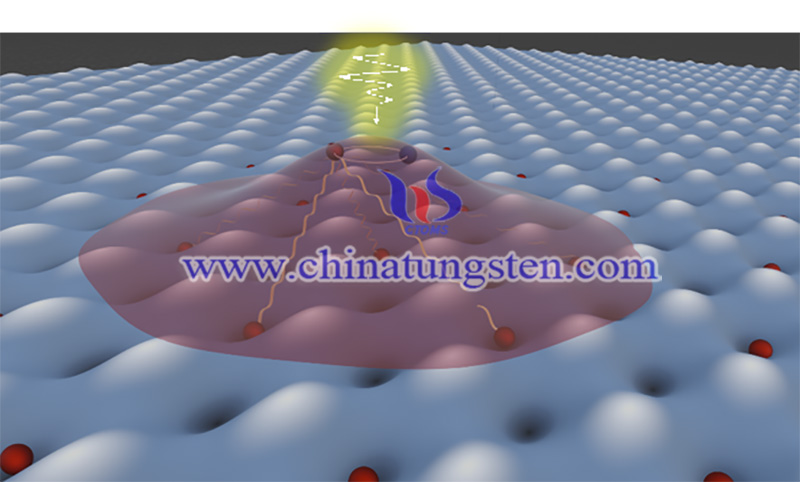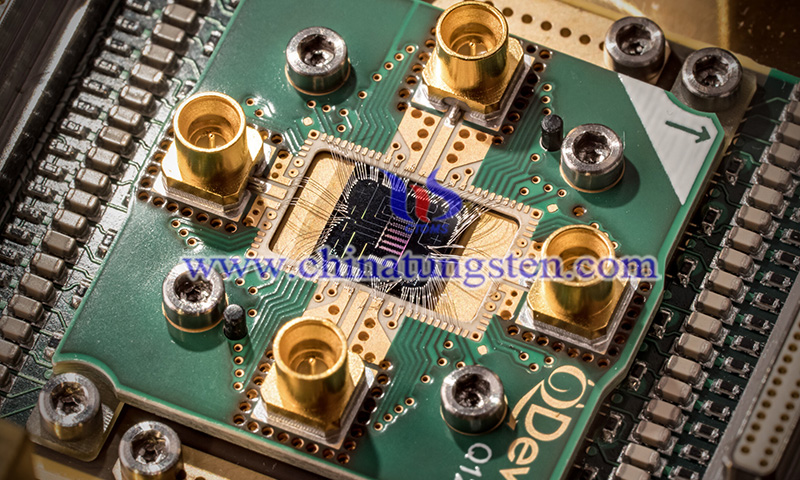Lasers Trigger Magnetism in Tungsten Diselenide and Tungsten Disulfide
- Details
- Category: Tungsten's News
- Published on Thursday, 21 April 2022 12:08
The researchers observed on ultrathin sheets of tungsten diselenide and tungsten disulfide a description of photo-induced magnetism, excited by laser light, in a bonded pair of an exciton (an electron) and its associated positive charge, also known as a hole. This activity induces a long-range exchange interaction between other holes trapped within the molar superlattice, orienting their spins in the same direction.
Researchers have discovered that light, in the form of a laser, can trigger some form of magnetism in normally non-magnetic materials. At the heart of this magnetism is the behavior of electrons. These subatomic particles have an electronic property known as "spin," which has potential applications in quantum computing. When illuminated by photons from a laser, the electrons in the material become oriented in the same direction.
The experiment, a collaboration between scientists at the University of Washington, the University of Hong Kong, and the Pacific Northwest National Laboratory, was published on April 20 in the journal Nature. The first author of the paper is Xi Wang, a postdoctoral researcher in physics and chemistry at the University of Washington.

(Source: UW-News)
By controlling and aligning electron spins at this level of detail and precision, the platform could have applications in quantum simulation, said co-first author Xiaodong Xu, a Distinguished Professor in the Department of Physics and the Department of Materials Science and Engineering at the University of Washington.
Xu said, "In this system, we can use photons to control the 'ground state' properties of charges trapped in semiconductor materials, such as magnetism, which is necessary to develop certain types of quantum bits, or 'quantum bits' - the level of control necessary for quantum computing and other applications."
The team used ultrathin sheets of tungsten diselenide and tungsten disulfide (each only three atomic layers thick) for their research. Both are semiconducting materials, so named because electrons move between fully conducting metals and insulators, with potential uses in photonics and solar cells. The researchers stacked the two materials together to form a "moiré superlattice," a stacked structure of repeating cells.
Stacked sheets like these are a powerful platform for quantum physics and materials research because superlattice structures can hold excitons in place. Excitons are bound pairs of "excited" electrons and their associated positive charges, and scientists can measure how their properties and behavior change in different superlattice configurations.
While studying the excitonic properties of the material, the researchers made the surprising discovery that light triggers a key magnetic property in this normally non-magnetic material. The photons provided by the laser "excite" excitons within the path of the laser beam, and these excitons induce a long-range association between other electrons, whose spins are all oriented in the same direction.

(Source: Times of Nation)
The spin arrangement the researchers witnessed within the superlattice is a characteristic of ferromagnetism, a form of magnetism inherent in materials such as iron. Each repeating unit within a moire superlattice is essentially like a quantum dot that "traps" an electron spin, Xu said. The captured electron spins can "talk" to each other, as these spins do, and are thought to be the basis for a type of quantum bit that is the basic unit of a quantum computer that can perform calculations using the unique properties of quantum mechanics.
Xu says that the stacked Cr (III) iodide layers form alternating magnetic domains: one is ferromagnetic (spins all aligned in the same direction) and the other is "antiferromagnetic", where the spins point in opposite directions between adjacent layers of the superlattice, essentially “cancel each other out”. This discovery also sheds light on the relationship between the structure of a material and its magnetic properties, which may drive future developments in computing, data storage, and other fields.
- Tungsten Manufacturer & Supplier, Chinatungsten Online: www.chinatungsten.com
- Tungsten News & Prices of China Tungsten Industry Association: www.ctia.com.cn
- Molybdenum News & Price: news.molybdenum.com.cn
- Tel.: 86 592 5129696; Fax: 86 592 5129797; Email: sales@chinatungsten.com



 sales@chinatungsten.com
sales@chinatungsten.com